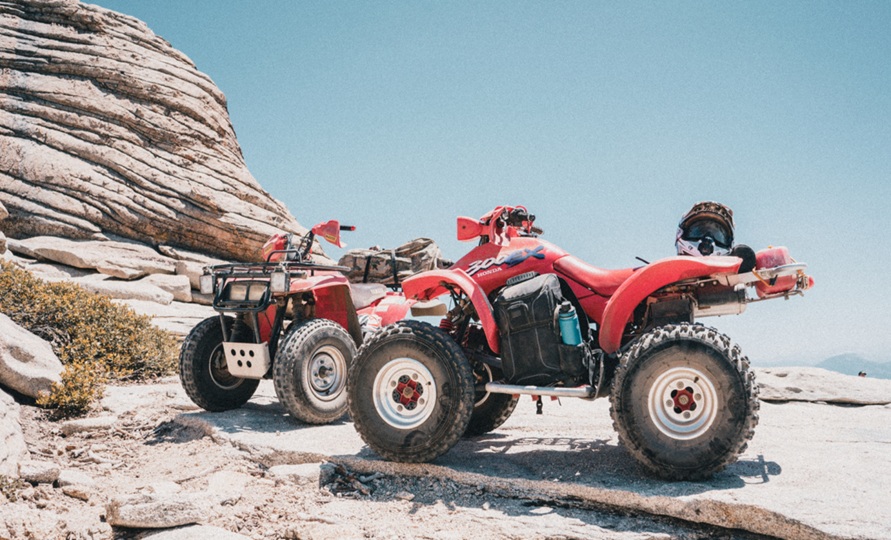Owning a 4×4 vehicle opens the door to adventure, capability, and rugged performance. Whether you’re navigating challenging off-road trails or powering through snow-covered roads, your 4×4 is built to handle tough conditions. But that kind of performance comes with responsibility—especially when it comes to maintenance.
4×4 systems include more moving parts than standard drivetrains, and neglecting key services can result in costly repairs, breakdowns in remote areas, or compromised safety. To keep your vehicle trail-ready and road-safe, here are seven essential services every 4×4 owner should prioritize.
1. Transfer Case Service
The transfer case is the heart of your 4×4 system. It distributes power from the transmission to the front and rear axles, allowing all four wheels to work together. Over time, the fluid inside the transfer case breaks down and loses its ability to properly lubricate gears and prevent wear.
Why it’s essential:
Dirty or low transfer case fluid can lead to grinding gears, poor power distribution, or even total failure.
When to service:
Most manufacturers recommend a transfer case fluid change every 30,000 to 60,000 miles, but it may be needed sooner if you frequently off-road or tow heavy loads.
2. Differential Fluid Change
Your 4×4 has two differentials—front and rear—that allow wheels on the same axle to rotate at different speeds. These components handle significant torque and require proper lubrication to prevent excessive wear and overheating.
Why it’s essential:
Old or contaminated differential fluid can cause premature wear to gears and bearings, leading to whining noises, reduced traction, or gear failure.
When to service:
Typically every 30,000 to 50,000 miles, but more often if you drive in extreme conditions like water crossings or deep mud.
3. Suspension System Inspection
Off-roading puts significant stress on your vehicle’s suspension system. Shocks, struts, bushings, and control arms all work together to absorb impacts and maintain wheel contact with the ground.
Why it’s essential:
A worn suspension system can lead to poor handling, reduced ride comfort, and increased wear on other components.
When to service:
Have your suspension inspected at least once a year, or more frequently if you notice a bumpy ride, uneven tire wear, or handling issues.
4. Brake System Maintenance
Brakes are always important, but even more so in a 4×4 that might be used for towing, trail driving, or steep descents. Dirt, mud, and water can accelerate brake wear and reduce performance.
Why it’s essential:
Maintaining your brake pads, rotors, and fluid ensures you have the stopping power needed in unpredictable conditions.
When to service:
Inspect brakes every 10,000–15,000 miles and replace pads or fluid as needed. If you hear squealing, grinding, or feel a soft brake pedal, get your system checked immediately.
5. Tire Rotation and Alignment
4×4 vehicles, especially those used off-road, often experience uneven tire wear due to aggressive driving, rocky terrain, and additional weight. Rotating your tires and ensuring proper alignment can help maximize tire life and maintain handling.
Why it’s essential:
Improper alignment or unbalanced tires can affect steering, fuel economy, and safety—especially during off-road maneuvers or highway driving.
When to service:
Rotate your tires every 5,000 to 7,000 miles and check alignment annually or after any significant trail ride.
6. Drivetrain and U-Joint Inspection
The driveshaft and universal joints (U-joints) are responsible for transferring torque from the transmission to the axles. These components are under constant strain, especially in lifted or modified 4x4s.
Why it’s essential:
A worn or failing U-joint can cause clunking sounds, vibration, or total drivetrain failure. Ignoring these signs can leave you stranded, especially when off-roading.
When to service:
Inspect the drivetrain at every oil change and grease U-joints if they are serviceable. Any unusual noise or vibration warrants an immediate inspection by a qualified 4×4 service mechanic.
7. Engine and Transmission Cooling Systems
Heavy-duty 4×4 use, such as towing or rock crawling, generates a lot of heat. Your cooling system is vital for keeping both the engine and transmission at safe operating temperatures.
Why it’s essential:
Overheating can cause major engine or transmission damage. A well-maintained cooling system keeps your vehicle running smoothly—even under pressure.
When to service:
Flush your coolant every 50,000 miles or according to your owner’s manual. Check hoses, radiator, and coolant levels regularly, especially before long trips or trail runs.
Your 4×4 is designed to take on challenges, but even the toughest vehicles need consistent care to perform at their best. Prioritizing these seven essential services will not only extend your vehicle’s life but also give you the confidence to explore without worry.
Make sure to partner with a trusted 4×4 mechanic who understands the unique demands of your vehicle. With regular maintenance and proactive attention, your rig will be ready for whatever road—or trail—lies ahead.





